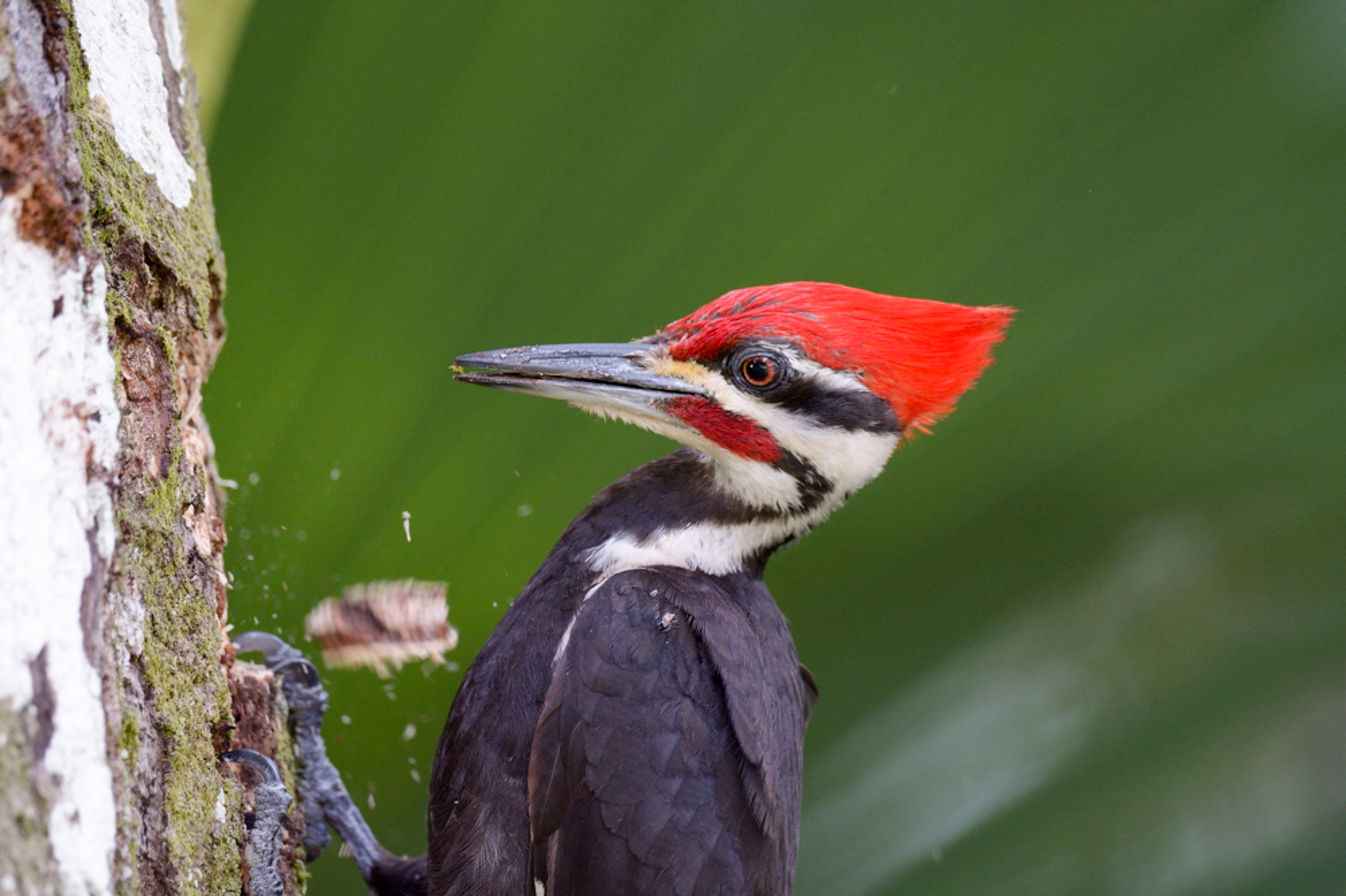Contributed by Bill Hamilton
Pileated Woodpeckers have always seemed to me to be great observers of people. I can think of quite a few times when I was out in the woods taking soil samples or sitting out on my deck having a rest when I would look up and see just a few yards away a Pileated Woodpecker hanging onto a tree trunk or branch, watching me. I remember, in particular, one winter I was out in my arboretum at campus putting up new tree markers. All afternoon I had been followed by a small group of tiny, Golden Crowned Kinglets. The kinglets flew around my head, perched on nearby shrub branches, and buzzed busily at me. I think that they hoped that I would scare up some food for them! Then, suddenly, they were gone, and I looked up and there on a tree right next to me was a Pileated Woodpecker contemplating me with his head slightly cocked. He looked, in comparison to the kinglets, as big as an German Shepherd!
I have gotten to know quite a few Pileated Woodpeckers out on my old Nature Trail at Penn State New Kensington, around my house here in Armstrong County, and up at Harrison Hills Park in northern Allegheny County. They are year-round residents and are especially fond of wide variety of forested ecosystems. Any habitat with large trees, any habitat with some trees that have some wear and tear and, ideally, some insect infestations! The resident pair out on our Nature Trail chiseled out their nesting holes high up in the tall white ash trees along the Stream Trail.
Black cherry trees are frequently set upon by Pileated Woodpeckers. On our hikes around Western Pennsylvania, Deborah and I have seen many, older black cherries extremely well perforated with large numbers of fist-sized holes (4 to 6” long, rounded rectangles) dug out by foraging Pileated Woodpeckers. The woodpeckers are looking for beetle larva or carpenter ants. On the ground next to many of these trees were impressively large piles of wood chips and sawdust from all of the pounding and digging. The chiseled holes were open wounds on the trees oozing sap and drawing in more insects and fungi. The trees had to have appreciable insect loads for the woodpecker to attack it, but the consequence of all of the hole digging, undoubtedly, was the hastened death of the tree.
Holes made by Pileated Woodpeckers as they feed or breed are important to many other species. The “cavity nesting birds” (Eastern Bluebirds, Tree Swallows, Chickadees, House Wrens etc.) all once primarily relied on woodpecker holes for their nesting sites. Bats and squirrels also compete for these often commodious tree holes. The nature of our forests, though, has changed due to human activity. Forests and woodlots are more managed and tended, and older trees, especially trees with abundant insects are often few and far between. The absence of large trees with their deep Pileated Woodpecker holes creates a real impediment to reproduction in the nest hole demanding bird species. Many of these birds now rely almost exclusively on human-made nesting boxes as artificial replacements for the formerly abundant woodpecker cut, tree holes.
The sound of a calling Pileated Woodpecker reminds me of the old Woody the Woodpecker cartoons. They have a rolling, laughing call that echoes through the woods. Hearing it, and then seeing the straight-bodied, crow-sized black bird with its long tail and bright red head streaking from tree to tree makes both the wild woods and not so wild suburban woodlots come alive with nature!
Photo: Dennis Derby / Audubon Photography Awards
